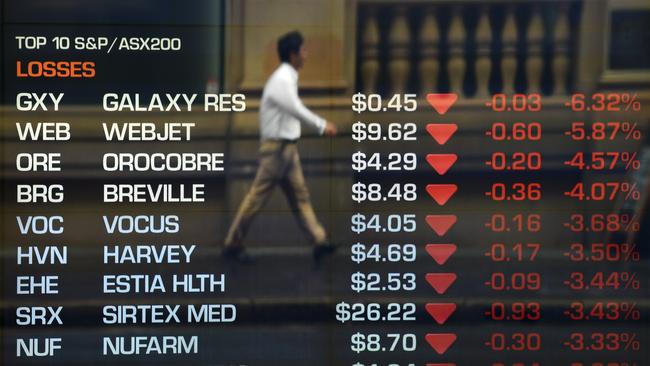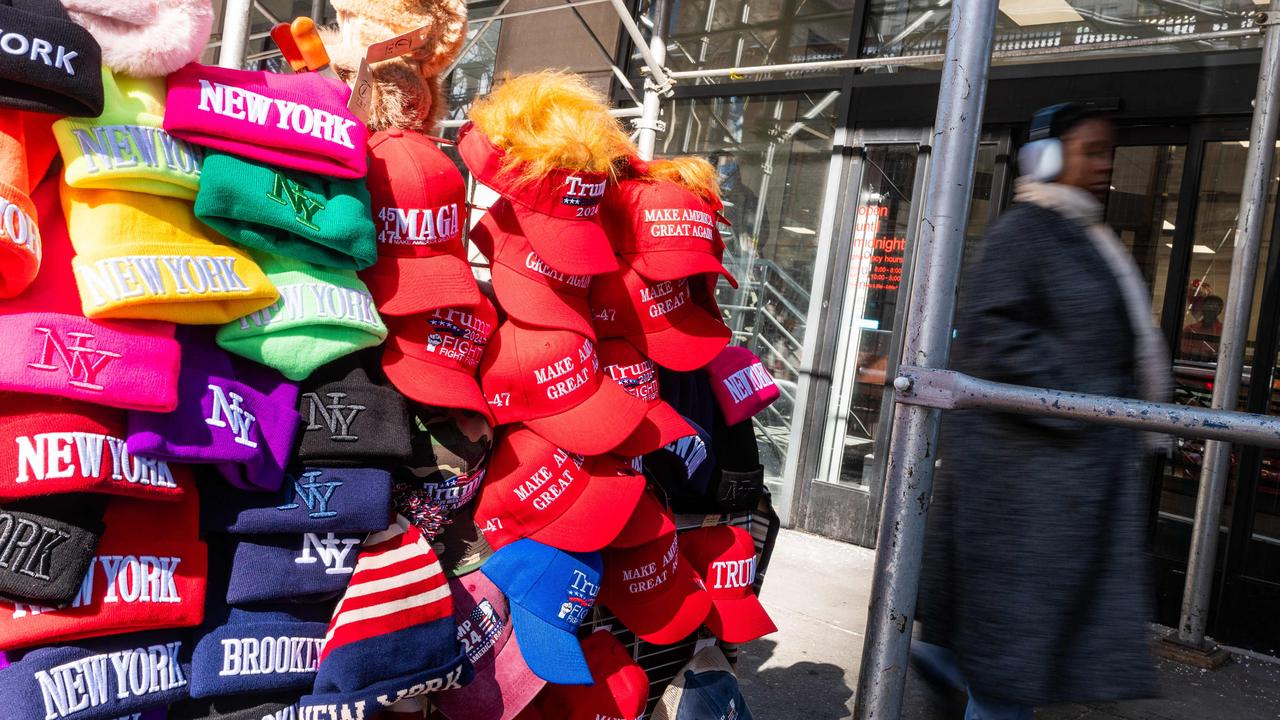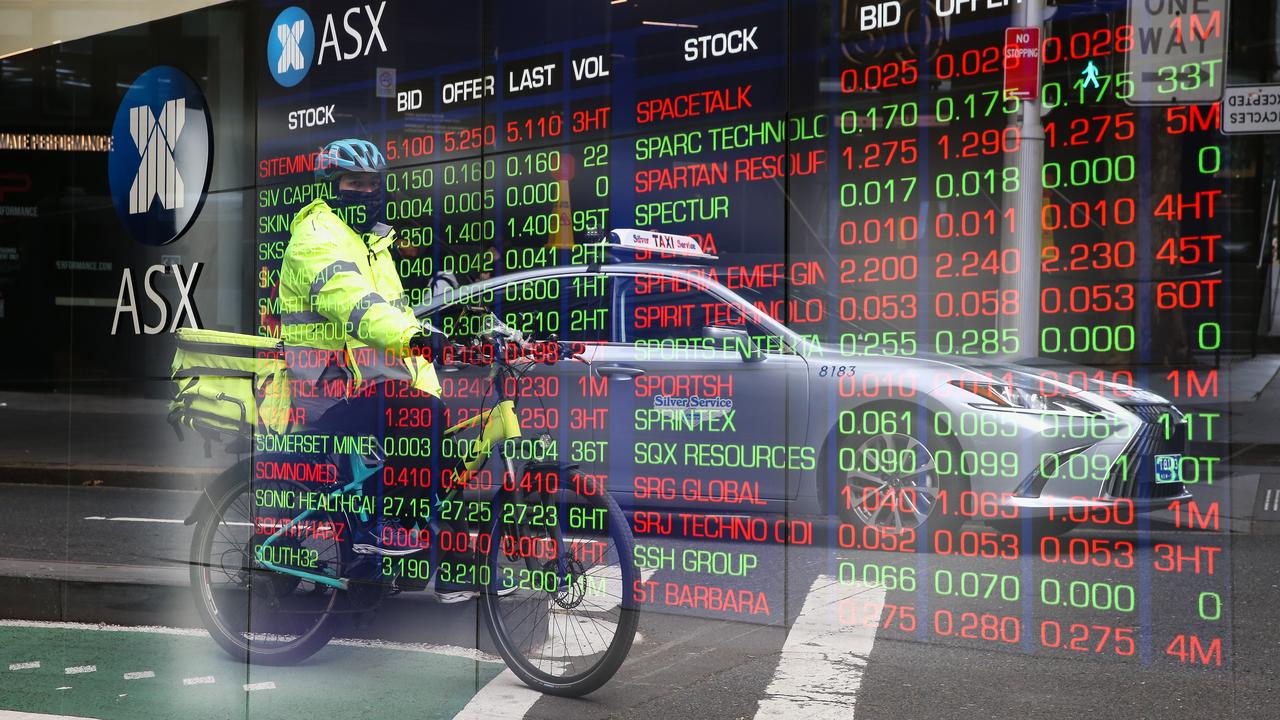Local bourse tumbles 1.5pc following steep falls on Wall Street
The local bourse has closed 1.6 per cent lower, after a sharp US sell-off sent Asian shares spinning.

Australia’s sharemarket has suffered its worst day in six months, after surging bond yields and fears of faster US rate hikes sparked the biggest falls on Wall Street since the US election in November 2016.
Around $30 billion has been wiped from the value of Australian shares and Asian markets are tumbling, but market analysts have dismissed fears that the bull run in global equities is at an end.
At the close of trade, the S&P/ASX200 index was down 1.6 per cent at 6026.2, with the local sharemarket having also erased last week’s rise. The index opened down 1.5 per cent a three-day low of 6031.
It comes as US stock index futures pointed to another bad night on Wall Street.
S&P 500 futures fell 0.6 per cent, Dow Jones futures fell 0.7 per cent and NASDAQ futures fell 0.4 per cent as the carnage spilled into Asia. Japan’s Nikkei 225 fell 2.2 per cent, the Hang Seng was down 2.7 per cent in early trading, while in South Korea the KOSPI index fell 1.7 per cent.
Morgan Stanley Institutional Equity Division Director Nick Savone warned that Friday’s surge in volatility will force volatility-targeting annuity funds to sell about $US30bn worth of equities.
“Even more troubling would be another down day on Monday as the impact of drawdowns rises from here as realized volatility would then rise above target levels,” he said in a report.
Australian consumer staples were leading broad-based falls, with Wesfarmers down 4.7 per cent at $42.07 after a billion dollar writedown on its Homebase home improvement chain in the UK.
Woodside Petroleum fell 2.8 per cent to $33.27 after the US energy sector led a 2.1 per cent fall in the S&P 500, and crude oil futures added to Friday’s decline with a 0.8 per cent fall to $US64.93.
Materials producers were also under pressure, with BHP having fallen 2.3 per cent to $30.11, while Rio Tinto fell 2.16 per cent to $76.56, although iron ore prices bucked the selloff in commodity prices with a 1.3 per cent rise to $US72.90 on Friday.
Bond proxies telecommunications, infrastructure and real estate were feeling the pressure after benchmark US 10-year Treasury bond yields hit a fresh-four-year high of 2.87 per cent in early trading after reaching to 2.84 per cent on stronger than expected US wage data on Friday.
But utilities and healthcare stocks were outperforming due to their defensive qualities.
A correction in global markets has been overdue, according to AMP Capital’s Shane Oliver, however the damage could remain limited.
“In the absence of an aggressive 1994 style back-up in bond yields or a US recession — neither of which we expect — the pull back in shares should be limited in depth and duration to a correction,” said Dr Oliver.
“However, it’s likely to be a more volatile year than last year.”
Additional reporting: AAP






